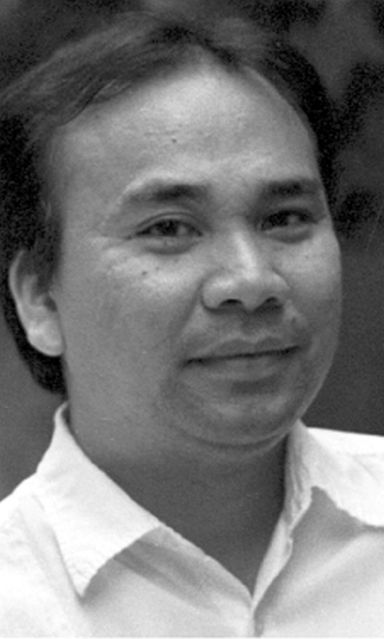
BERSALES
A brief unplanned stop at a church renovation project going nowhere somewhere in Western Cebu, I had a brief chat with one of the parishioners there that got me into thinking about how history will judge us and our actuations — especially when one is a parish priest who feels that he is a god among mere mortals.
The story I heard, about how this parish priest unceremoniously stopped the project when it was about to reach the façade of this huge church on the day he took over, got me into thinking about how different the Augustinian friars of old were. Their achievements are legend among documents later compiled by fellow Augustinians that now form the record of the Archivo de la Provincia Agustiniana de Filipinas (APAF) in Valladolid, Spain.
By now we are already most familiar with the heroic role of Fray Julian Bermejo, OSA, parish priests of Boljoon, then Oslob and then back to Boljoon before going on to Badian and becoming, in between, a provincial of the Augustinians. Bermejo rallied parishioners in building a line of watchtowers in Southern Cebu that effectively checked the incessant and devastating slave raids from Mindanao and Sulu during his stint, which covered the period 1802 to 1849. He caused the construction of a perimeter wall around Boljoon Church and made the town the center of defense against Moro raids in the Visayas.
Beyond Fray Julian, however, were others who did not shirk in their responsibility, not just in the spiritual realm but also in the more practical needs of ensuring a better life for their parishioners. In Oslob, we find in the records that Fr. Juan Jose Aragones, OSA (later, Bishop of Nueva Segovia), Frs. Apolinario Alvarez, OSA; Mauricio Alvarez, OSA; and Enrique Magaz, OSA, vigorously promoted agriculture among the natives under their care.
Fr. Gregorio Ros, OSA, writes of them in 1882, thus: “These aforementioned parish priests furnished the town with an industry, no less, teaching the natives to make use of cotton, which grows in abundance. And to make them more abundant, they distributed them to the immediate towns. They also taught cotton weaving to the natives, making blankets, napkins, shawls and skirts. No one would be in need of these because all the residents have their loom with which they make their dresses that…are very tasteful.”
Accord to him, it was due to Fr. Apolinario Alvarez’s diligence that the long road next to the mountain and parallel to the Camino Real (now the National Highway) was built and that the priest “worked a lot on the construction of a bell tower that afterwards was partly damaged by a strong tremor.” Fr. Alvarez also provided the church with a strong and beautiful floor in the Presbytery, two new altars in the crossing, and the main altarpiece. He also increased the cajoneria of the Sacristy and ordered the construction of a small organ for the choir.
Fr. Ros also mentions the accomplishments of Fr. Enrique Magaz, OSA (later parish priest of Sibonga, among many other assignments) this way: “In pursuit of his ministry during the six months that he was at the head of this town, where an epidemic also occurred, he was nevertheless careful to keep the roads and bridges clean. He also adorned the church with a shrine and comagon (kamagong?) steps (‘gradillas’) with gold trims, two gilt chairs with damask tapestries, and very comfortable pews for the principalia.”
He also writes profusely of another priest and his work, Fr. Mauricio Hernandez, OSA, who planted several different trees and small shrubs that one could see around the convent and church. Fr. Ros says that it was due to Fr. Hernandez that the major part of the town was compact within hearing distance when the bell tolled because he had the houses aligned, walled with tabique pampango (wooden partitions finished with lime mortar), giving Oslob “a certain European air according to the comment of some travelers.”
Fr. Hernandez also opened several roads and erected signposts in all the streets, inscribing in them the names of some saints and famous persons. One survives to the present: that of Calle Juan Aragones, carved on coral stone and still standing at one corner of the stone perimeter of the church. Fr. Ros adds: “This tireless priest even returned to raise the bell tower that shortly before had fallen, surrounded the cemetery with a stone wall topped with wood. He also built in the center a chapel where one can say Mass. He began and saw the very advanced work on the Tribunal, which is all of stone, although unable to see its completion as he was called back to Spain to head the Colegio de Vid.”
Finally, it was Fr. Fernandez who placed in the choir a beautiful organ built in Spain by the famous organist Don Doroteo Otorel. “With very little money, he always found a way of endowing the church with various images and adornments, among which were pavilion and damask curtains.”
Alas, the church of Oslob was burned not once but twice, the latest one was sometime in 2008, which included its precious tile-roofed convent. Thus, we are left with a written testimony by a fellow priest about those who came before him and accomplished so much.
Reading all these makes you wonder if some priests today, specially those who clash with their parishioners for one reason or another, think of what legacy they leave behind when they go, or whether columnists like this one will write about the mess they left behind.
Disclaimer: The comments uploaded on this site do not necessarily represent or reflect the views of management and owner of Cebudailynews. We reserve the right to exclude comments that we deem to be inconsistent with our editorial standards.
